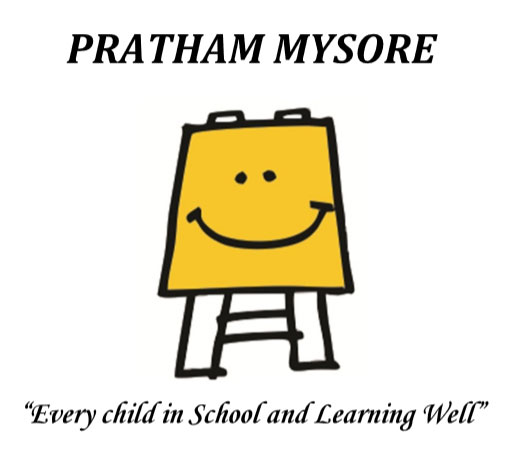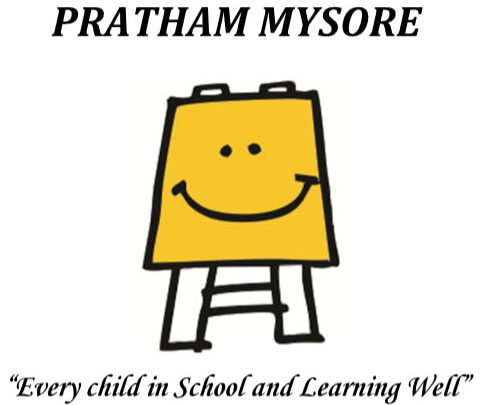
- This event has passed.
A Model Village or a Model for India?
May 5, 2023 @ 12:00 am
Author: Ms. Preeti Ranjan
This retelling of events begins from the moment we boarded the bus that would take us on a journey not only through the scorching landscape of rural T. Narasipura, but also through time. A motley crew of city slickers was ready to jump into an immersive experience, but what really set the tone of the visit was the retelling of Pratham Mysore’s story by Mr. Sheshadri.
As an educational NGO that started in 2002, it has many milestones under its belt, but what really stood out is that Pratham Mysore has its ears to the ground. Each time they were hit with a stubborn performance metric they couldn’t better, they were able to identify the root cause and formulate a solution. In its early days, when children were dropping out of Government Schools, they realized that children hadn’t been taught the basic school readiness discipline required at Grade 1 – they started the Balawadi Program (now adopted as the Anganwadi program across all Government schools in the state). When children started enrolling in schools but still did not demonstrate grade level literacy and math ability, they realized that teachers did not have the right resources to teach – they collaborated with retired educationists to developed inhouse Math and Literacy kits to help teachers simplify learning and make it a joyful experience. These accelerated teaching interventions are now used across all Government Primary Schools in the state). When children showed lethargy and lack of concentration in class, they realized that children were not eating right – they added a health and nutrition component to their programs.
With this background, around 2019, Pratham Mysore started to think about quality of life and wholistic child development. Children in rural areas often don’t enjoy basic amenities that urban children take for granted. When COVID-19 struck, this fact of life was thrown into stark relief. Kids across the world faced learning losses. Urban children had online classes, which of themselves were less than ideal; rural children didn’t have devices to even access online classes. Being able to “just Google it” is not so simple when you don’t even know how to turn on the computer. Reaching children in villages called for a completely different approach, and so began the snippets of meaningful voice messages broadcast over WhatsApp once a week. By 2020, this simple outreach routine had started to coalesce and evolve into Pratham Mysore’s Model Village Program.
The cornerstone of the program is the importance it places on community participation. The program only starts when the village agrees to sign a “3-Year MOU” with Pratham Mysore. In these days of scams and grabs one is instantly suspicious, but what does Pratham Mysore ask the villagers to sign over? Pledges that they will visit their child’s school at least twice a month, that they will switch off TVs when their children are studying in the evenings, that they will continue to uphold these practices once Pratham Mysore leaves, and the like.
When we got off the bus at Sujlur, nothing seemed too different from other villages that we had passed enroute. The fields were green, roads were kaccha and cows lazily swatted flies under the sweltering heat of the summer sun. As soon as we entered the first little building, however, we knew something was afoot. We were in the Model Village Anganwadi – One of the walls had a colourful jungle mural which the teacher was using to talk about nature. Simple handmade educational posters covered the other walls and learning resources were stacked all around the room. The neatly dressed teacher’s little flock demonstrated their ability to read words and simple sentences, and do simple math with an understanding of place value. The very fact that parents had voluntarily agreed to send their children in uniform was testament to how seriously they took this program. These children were no stragglers, they were ready for Grade 1 ahead of time.
The flourishing Anganwadi started a trust cycle, and inspired the women of the village to ask if Pratham Mysore could do something to help them contribute to their family’s incomes. As the men of the village necessarily set off to work each day, the women stayed behind to look after their houses and children. They had time to learn new skills, and that is how the Tailor Skilling Center started off. A few small batches, and the skilling center not only gave the village new home tailors, but also resulted in new jobs at garment factories in the area. Empowering the primary caretakers of village children became an important component of the Model Village Program. Women who volunteered their time to help children do homework in the evenings, now aspired to become teachers.
Government schools are the fulcrum of education in villages. There are “convents” and private schools which are seen as ideal but are usually far and have higher fee structures. As a result, most children are enrolled at Government schools, where learning outcomes don’t always show the best results. With all the mise-en-place provided by the Anganwadi and Skilling Center, what could be done to help the kids in higher grades? Pratham Mysore conceptualized a low-cost Learning Zone – a simplified library, computer lab, audio-visual room, homework center and playroom all rolled into one. Before long, they had assigned time slots to each and every child in the village, and no parent wanted their child to miss out on this opportunity. Parents who brought their kids, started hanging around reading newspapers and leafing through children’s books. This Learning Zone became the ideal place to impart the weekly WhatsApp broadcast that had started this program to begin with, reinforcing the discipline it takes to excel at school and succeed in life. This space provided by the villagers truly became a “community space”.
Throughout our visit we had been accompanied by a sizeable group of people who were telling us about the program and answering our multiple queries. Only when everyone sat down for a discussion next, did one realize that they were villagers and not Pratham Mysore functionaries. They had been encouraging their children in the Anganwadi and taking pictures. They had been encouraging their friends and juniors at the Skilling Center. They had given up a day of work and consequently lost wages to be there that day, making it abundantly clear to us visitors how invested they were in this program. They spoke about how proud they were of how far their village had come. Their kids were outperforming kids from the surrounding areas, even at the “convent”. One could hear the pride in their voices when they spoke about how parents were willing to pay the village teachers and make these new spaces self-sustaining instead of sending their kids far away. One could sense that they truly thought of these spaces that the program had helped create as their own.
To square off our visit, the children had prepared a street play for all of us to see. The message of the play was heavy – child marriage is illegal and lowers quality of life. The depiction, however, was simple and relatable. What was heartening to see was the applause the play got, not only from the visitors, but also from the doting parents and assorted villagers who had stopped to watch the road show. The message had found its mark, and the cute play actors became the highlight of the day.
The program is currently functional in four villages, with at least ten more villages in the vicinity are eagerly waiting to sign the Model Village MOU with Pratham Mysore. Costs of setting up these spaces are fixed one-time investments. The crux of the program lies in identifying, training and sustaining key persons who run the spaces. Pratham Mysore with its ears to the ground has found a niche it excels in. The length and breadth of rural India awaits.
A Sujlur Institute of Technology or a Muthathi College of Medicine along the idyllic banks of the Kabini river in the not-so-distant future doesn’t seem too farfetched at this point. This “agreement” between the villagers and Pratham Mysore has without a doubt won gold in the short sprint. The marathon, however, has to be run by the villagers alone. One hopes that seeds sown by the Model Village Program have taken deep root in their hearts.
The founder of Pratham Mysore, Mr. Ashvini Ranjan, is the thinktank behind this project. In his words – “It’s a pursuit.”
Author: Ms. Preeti Ranjan

